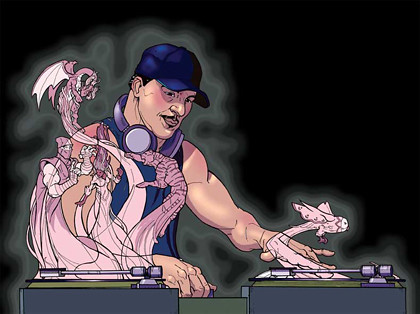Mixmaster Mike
By Charlie Russo
Deep in the annals of hip-hop history, the origin of the deejay’s scratch is filed under the year 1975 and reads like this: “Eleven years old and practicing deejaying on his older brother’s turntables, Theodore Livingston grabbed for the record as his mom shouted at him to turn the music down. Hearing an odd scratching sound through his headphones as the vinyl moved in his grasp, Theodore knew he was on to something.” Livingston eventually became known as Grandwizard Theodore and was credited as the inventor of both the scratch and needle drop techniques.
Thirty years later, hip-hop has begun to outsell rock music in America, and early forefathers such as Grandwizard Theordore have been succeeded by a lengthy list of turntable talent: DJ Premier, Q-Bert, Z-Trip, Cut Chemist...and of course, Mixmaster Mike. These names may not necessarily be classified as early inventors, but are sure to be remembered as major pioneers all the same.
That said, Mixmaster Mike may very well be remembered as the John Coltrane of turntablism: a musician who caused a quantum leap in the evolution of an already developing art form.
CLICK HERE FOR ENTIRE STORY



<< Home